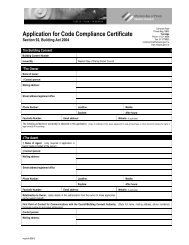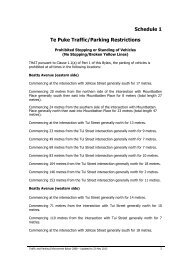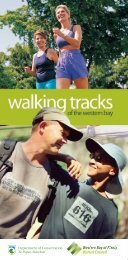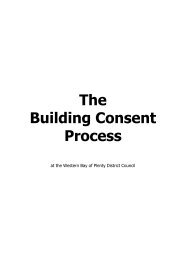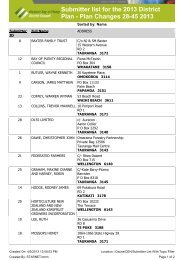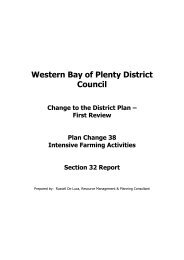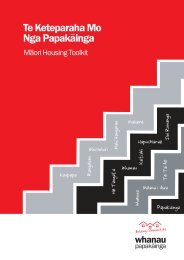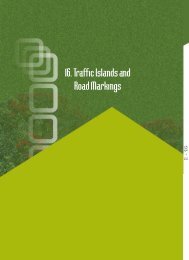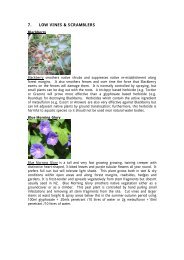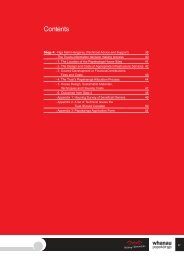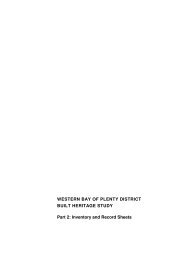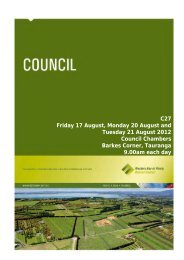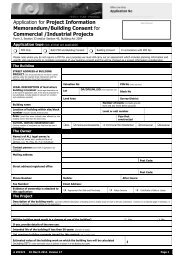Te Puna Plan - Western Bay of Plenty District Council
Te Puna Plan - Western Bay of Plenty District Council
Te Puna Plan - Western Bay of Plenty District Council
You also want an ePaper? Increase the reach of your titles
YUMPU automatically turns print PDFs into web optimized ePapers that Google loves.
The area covers the <strong>Te</strong> <strong>Puna</strong> peninsula between the <strong>Te</strong> <strong>Puna</strong> Stream and the Wairoa River, and<br />
continues to the south beyond State Highway 2, into the Minden hills and finishes approximately<br />
3.3kms from the state highway. The area takes in Quarry Road, Minden Road, Junction Road and<br />
part <strong>of</strong> Crawford Road. The data has been taken from the 2001 Census (recorded on 6 March 2001),<br />
and comparisons have been made with the 1996 and 1991 Census.<br />
69% <strong>of</strong> people over 15 are in either full or part time work<br />
the unemployment rate in <strong>Te</strong> <strong>Puna</strong> is 4%. It has been decreasing since 1991<br />
22% <strong>of</strong> the workforce is employed in the agriculture and fisheries industry<br />
percentages <strong>of</strong> people earning in the higher income bracket have all increased in the period<br />
1996-2001. There are less people in all income brackets below $25,000<br />
14% <strong>of</strong> people aged 15 years and over have an annual income <strong>of</strong> $50,000 or more<br />
average household and family incomes are also increasing<br />
the <strong>Te</strong> <strong>Puna</strong> area has higher qualifications when compared to the rest <strong>of</strong> the WBOP. 33% <strong>of</strong><br />
people aged 15 and over have a tertiary or vocational qualification<br />
What defines us?<br />
<strong>Te</strong> <strong>Puna</strong> comprises many different communities:<br />
Map showing location <strong>of</strong> Minden/<strong>Te</strong> <strong>Puna</strong> in<br />
relation to the rest <strong>of</strong> the <strong>Western</strong> <strong>Bay</strong> <strong>of</strong><br />
<strong>Plenty</strong> <strong>District</strong>.<br />
farming<br />
horticulture<br />
Maori<br />
lifestyle<br />
rural-residential<br />
residential<br />
and many communities <strong>of</strong> interest:<br />
Map showing study area in Minden/<strong>Te</strong> <strong>Puna</strong><br />
our population was 6117 in 2001 with 49.8% males and 50.2% females<br />
our age structure is similar to that <strong>of</strong> the wider <strong>Western</strong> <strong>Bay</strong> <strong>of</strong> <strong>Plenty</strong> (WBOP) district, in that<br />
there are low numbers <strong>of</strong> people in the 20-34 year age group. This trend has been occurring<br />
since 1991, and has become even more pronounced in the last five years<br />
our median age is 39<br />
89% <strong>of</strong> us are European and 15% are Maori<br />
the total number <strong>of</strong> houses in <strong>Te</strong> <strong>Puna</strong> increased 39% from 1991 to 2346 in 2001<br />
80% <strong>of</strong> private dwellings in the area are owned by the occupier, compared with 74% for the<br />
WBOP district, and 69% for New Zealand<br />
89% <strong>of</strong> people living in <strong>Te</strong> <strong>Puna</strong> in 2001 were living in New Zealand in 1996. 47% were living in<br />
the same dwelling as they were five years ago, and 42% had moved from another area in New<br />
Zealand to <strong>Te</strong> <strong>Puna</strong><br />
6.5% <strong>of</strong> the population was not born five years ago, and another 4% were living overseas<br />
the proportion <strong>of</strong> one person households is increasing throughout New Zealand, and this is true<br />
in the <strong>Te</strong> <strong>Puna</strong> area as well. One person households have increased from 11% in 1991 to 14%<br />
in 2001. This trend is set to continue<br />
in 2001, 81% <strong>of</strong> households housed one family, down from 84% in 1991<br />
<strong>Te</strong> <strong>Puna</strong> Community <strong>Plan</strong> March 2007 Page 5<br />
<br />
<br />
<br />
<br />
<br />
<br />
<br />
<br />
<br />
<br />
<br />
<br />
long term residents<br />
lifestyle community<br />
new arrivals<br />
families with young children<br />
business community<br />
mobile population<br />
marae community<br />
high and low income groups<br />
diverse workforce<br />
predominantly European<br />
traditional farming community<br />
residential village<br />
It is an area with a range <strong>of</strong> economic relationships and interdependences<br />
<br />
<br />
<br />
<br />
<br />
wide range <strong>of</strong> business/type and location<br />
>50% employed full time (>15 years old)<br />
>20% farming, fishing and forestry<br />
>10% in health and pr<strong>of</strong>essional services<br />
many deriving main income from outside <strong>Te</strong> <strong>Puna</strong>



